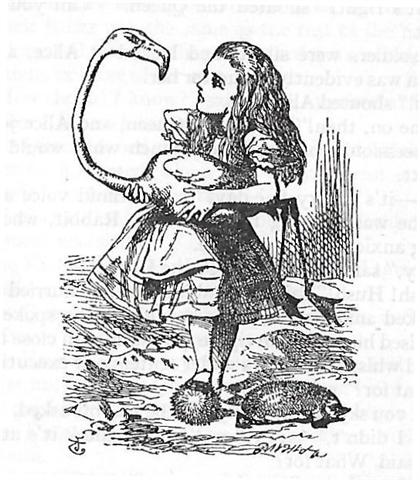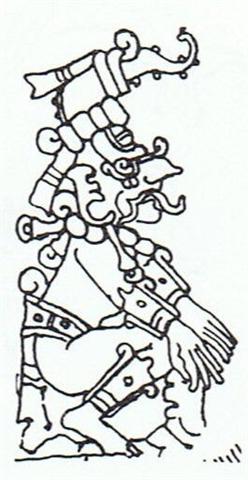|
584
29 It was all very a-musing and worthy of keeping in mind. But it was very complicated and con-fusing, easy to misunderstand.
Therefore, at the regular and proper times and places, everyone had to come together in order to remember it properly. ... When it was evident that the years lay ready to burst into life, everyone took hold of them, so that once more would start forth - once again - another (period of) fifty-two years. Then (the two cycles) might proceed to reach one hundred and four [104] years. It was called One Age when twice they had made the round, when twice the times of binding the years had come together. Behold what was done when the years were bound - when was reached the time when they were to draw the new fire, when now its count was accomplished. First they put out fires everywhere in the country round. And the statues, hewn in either wood or stone, kept in each man's home and regarded as gods, were all cast into the water. Also (were) these (cast away) - the pestles and the (three) hearth stones (upon which the cooking pots rested); and everywhere there was much sweeping - there was sweeping very clear. Rubbish was thrown out; none lay in any of the houses ... However, the invention of the alphabet threatened it All: ... Most ingenious Thoth, said the god and king Thamus, one man has the ability to beget arts, but the ability to judge of their usefulness or harmfulness to their users belongs to another; and now you, who are the father of letters, have been led by your affection to ascribe to them a power the opposite of that which they really possess. For this invention will produce forgetfulness in the minds of those who learn to use it, because they will not practise their memory. Their trust in writing, produced by external characters which are no part of themselves, will discourage the use of their own memory within them. You have invented an elixir not of memory, but of reminding; and you offer your pupils the appearance of wisdom, not true wisdom, for they will read many things without instruction and will therefore seem to know many things, when they are for the most part ignorant and hard to get along with, since they are not wise, but only appear wise ... The remedy (rakau) was to look up to the stars for guidance, to where it All once upon a time had come from.
... The great stone Moai of Easter Island were at one time equipped with beautiful inlaid eyes of white coral and red scoria. In a number of cases - though not at Ahu Akivi - sufficient fragments have been found to make restoration possible, showing that the figures originally gazed up at an angle towards the sky. It is therefore easy to guess why this island was once called Mata-Ki-Te-Rangi, 'Eyes Looking at Heaven'. On a moonlit night its hundreds of 'living' statues scanning the stars with glowing coral eyes would have seemed like mythic astronomers peering into the cosmos. And in the heat of the day those same eyes would have tracked the path of the sun, which the ancient Egyptians called the 'Path of Horus' or the 'Path of Ra'. This was also the 'path' pursued by the Akhu Shemsu Hor, the 'Followers of Horus', for whom the exclamation Ankh'Hor - 'the god Horus Lives' - would have been an everyday usage ... For instance, it would then soon be discovered that the culmination place (type W) of the Breast (Schedir, *8) occurred in the night of November 18 (*242): ... The correspondence between the winter solstice and the kali'i rite of the Makahiki is arrived at as follows: ideally, the second ceremony of 'breaking the coconut', when the priests assemble at the temple to spot the rising of the Pleiades, coincides with the full moon (Hua tapu) of the twelfth lunar month (Welehu). In the latter eighteenth century, the Pleiades appear at sunset on 18 November. Ten days later (28 November), the Lono effigy sets off on its circuit, which lasts twenty-three days, thus bringing the god back for the climactic battle with the king on 21 December, the solstice (= Hawaiian 16 Makali'i) ...
When Metoro said Niu moe te goe he suggested for Bishop Jaussen on Tahiti that the Milky Way (te goe) 'had gone to sleep' (moe), and presumably this event was connected with the culmination of the star named Breast in the Cassiopeia constellation:
Counted from the Julian date for spring equinox (March 25, *84) the day number for November 20 would be 324 - 4 = 320, suggesting a connection with the South Pole star Dramasa (*320). And *202 at October 9 (259) according to the era of Bharani (*41) would in turn suggest also a connection with Spica (*202). 202 + 118 = 320: ... The vertical direction determined by the plumb bob at the great Canopus (*95), located south of the equator, corresponded to the vertical direction of the thong down from the tiny Fox at the top to Spica in the middle. With Dramasa (*320) as the tiny star at the very bottom. They surely should correspond to each other, for *320 (Dramasa → Spica + 118) - *95 (Canopus) = *225 → day 225 at August 13.(= 107 + 118) ...
|
||||||||||||||||||||||||||||||||||||||||||||||||









